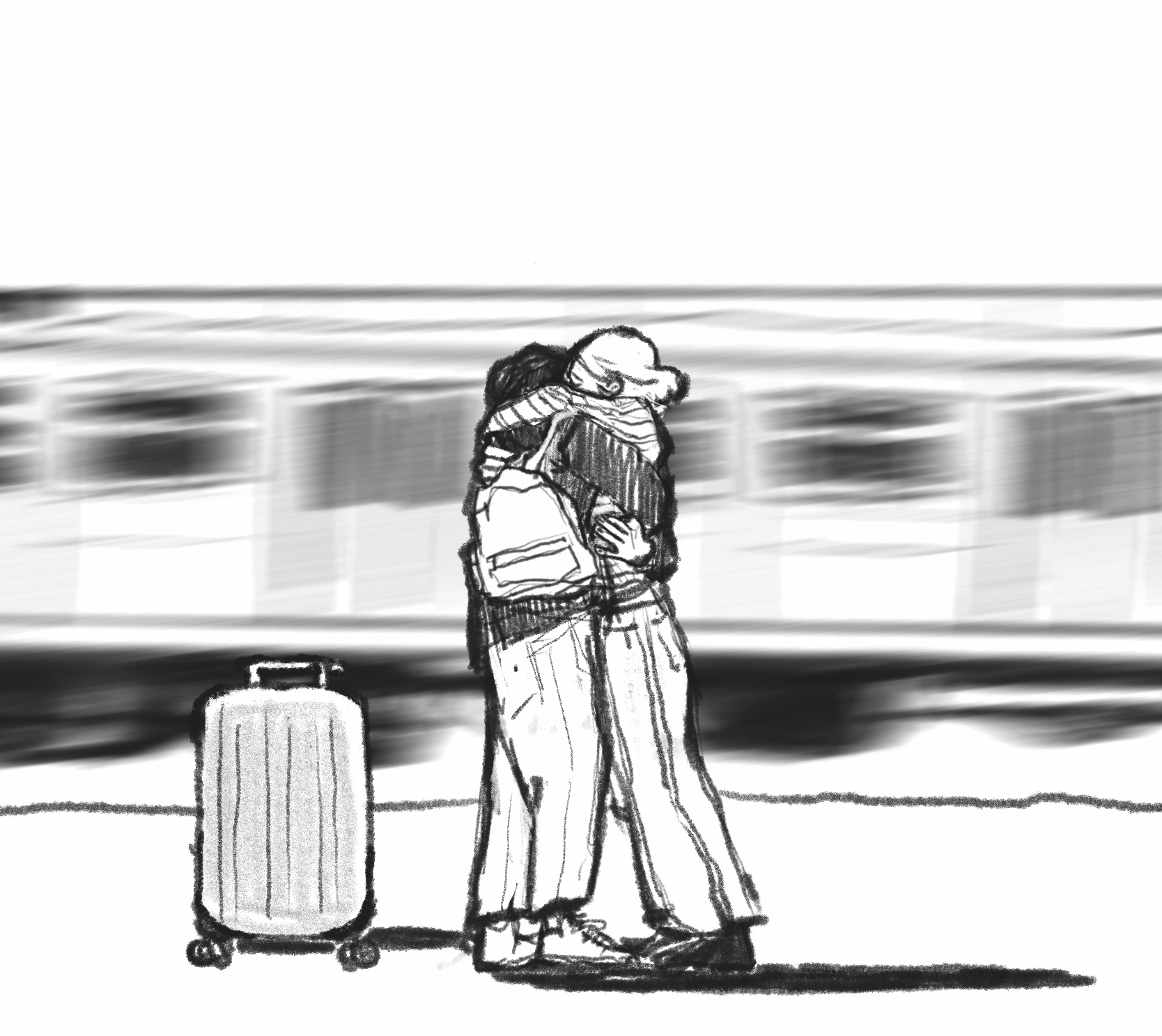Seen through film
November 1, 2024
 Ada Potter
Ada PotterIt’s all too easy to ignore mundane things. A plastic water bottle, stains on the grocery store wall, pigeons, sunlight more shadow than light. A pot of water just before it boils. The diffuse mutter of traffic. It’s so easy for the ordinary to slip into the boring, even the ugly. Why is it that the ordinary world can’t always be beautiful?
Lately, my eyes slide unseeing over things. The ability to see beauty in the ordinary, to detect magic in the air … it’s more often gone than not. Life, for the most part, tastes of gray-brown mush—with a raisin or two thrown in. Admittedly, some things have approached the magical: take, for example, two women at the train station hugging so earnestly and for so long that some people stared or, hidden behind Massachusetts Hall, a narrow slice of light so bright the lawn appeared bathed in gold. But these instances aren’t satisfactory. I hardly stopped to experience them. As I blindly cast about with less and less hope, I wonder again and again: How can I create magic in the world around me?
I need a wand. STAT.
According to Google, magic is “the power of … influencing events by using mysterious or supernatural forces.” It’s also “a quality of being beautiful and delightful in a way that seems remote from daily life.” Clearly, a witch is waving her wand around and casting “beauty” spells on the ordinary in my life. Or at least she had been. I need to hunt her down, interrogate her and commandeer her wand.
Fortunately, I already know of magicians at Bowdoin. But instead of wands, they wield paintbrushes, cameras and pens. One magician, Bob Fu ’25, makes the ordinary magical with a particular wand: a Ricoh GRIIIx HDF. He and his camera cast a spell with the mere click of a button. Immediately, a moment or series of moments—depending on shutter speed—are frozen within a frame while everything else keeps moving. And this is only half the magic.
Some photographs aren’t memorable. While some depict rare or mind-boggling things, what matters here are those photos transforming ordinary things into magical ones. Truly magical photos take us by surprise. On those occasions, we look at a photo and the bustling world around us freezes while the picture comes to life. It breathes, and we feel its exhale. History is no longer the picture’s domain—it’s here, in the present—no matter how long ago it was taken. Just like the inexplicable magic of certain lived moments, special photographs make us excited to see. They leave us full.
Maybe that’s why so many people create art or are drawn to museums, fashion shows or films. We’re hunting for that satiation, a restored faith in the magic of material reality. Clearly, the magic doesn’t simply originate from reality—like an invisible energy floating all around us. Instead, it requires a human element, an act of perceiving, like hands squeezing lightning in a bottle. And while it can’t be forced into that bottle just because we desire its effects, in rare cases, it can be captured.
Is Bob lucky, or is there a method to the magicness?
For two hours I tried to weasel some great secret from him, but he seemed as baffled as I was.
“There’s no formula for telling when it’s good. Sometimes you look at a photograph, and it gets uglier and uglier the more you look,” Fu said.
When I asked him what makes a photo “good,” he responded that it’s one that makes him happy.
I guess it’s time to hunker down and be patient. If I continue to let the world slide past without seeing, I’ll undoubtedly miss those special moments. And while wielding my own kind of wand couldn’t possibly beautify things simply because I want it to, it has the potential to. Art demands of us an unquenchable thirst for that unpredictable magic. Art doesn’t demand Merlins; it demands undeterrable apprentices.
Now, I feel confident there isn’t some inherent lack in me; rather, it’s my recently lazy approach to seeing, and the inherent rarity of magic.

Comments
Before submitting a comment, please review our comment policy. Some key points from the policy: